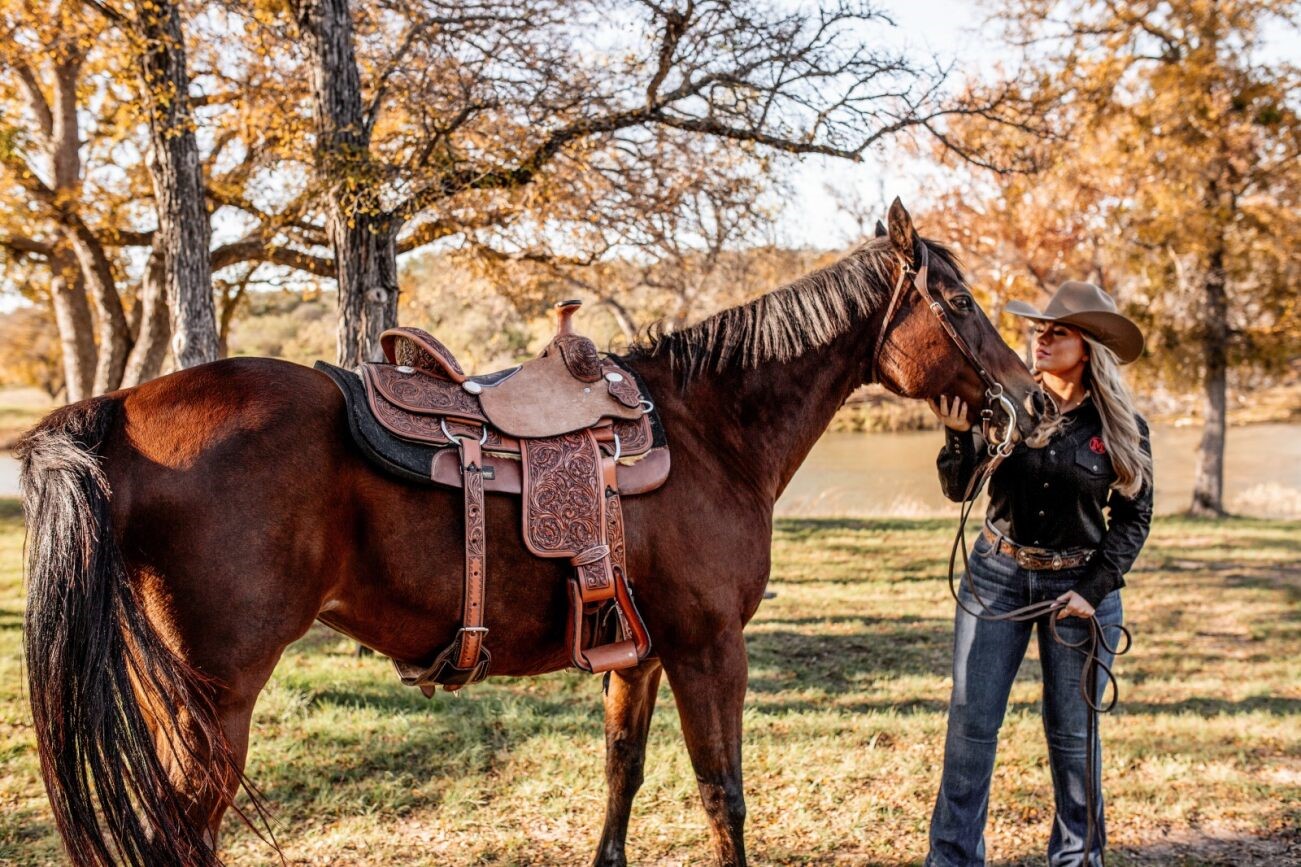Horse Saddles are one of the oldest and most important accessories in the lives of every rider as they relieve pressure on the horse. Keep the rider stable and secure. It does not matter if you are an experienced rider or a weekend warrior, or an elite athlete, getting a good saddle. Even knowing how to select a good one is vital. Properly fitted saddles can greatly influence the relationship of the rider with the horse and experienced pain both the rider and horse can suffer.
Types of Horse Horse Saddles
Horse Saddles are equipment used on horses, and these are of different kinds, depending on the kind of riding and activities. The most common types include:
1. English Horse Saddles:
These are used in such intents as dressage, show jumping and evening. Properly, English Horse Saddles are lighter and are intended to provide more precise commands than the western type; therefore, the rider feels that he is almost touching the horse’s back. One example is, as has been mentioned before, that the flaps on the dressage Horse Saddles are longer to keep the legs straight and to allow so and the flaps on the jumping Horse Saddle’s are forward-cut to keep balance with the short stirrups used for jumping.
2. Western Horse Saddles:
These Horse Saddles are used for ranch work, for use in rodeo and for trail riding. Western Horse Saddles are larger and heavier than English Horse Saddles. They are designed to spread the rider’s load over a larger portion of the horse’s back, reducing pressure on the spine during long rides. They also feature a horn at the front for roping cattle.
3. Endurance Horse Saddles:
Designed for riding during endurance events or any events that may require a prolonged duration on horseback, endurance Horse Saddles are lightweight and comfortable to both the rider, and the horse. They are equipped with padded seats and stirrups which increase the low impact European shock absorber. These Horse Saddles are preferred by those who engage in endurance race and long distance trail riding.
4. Treeless Horse Saddles:
While traditional Horse Saddles come with a rigid frame or better still a “tree,” treeless Horse Saddles allow for even more variability. They are usually light made and can easily follow the ride of the horse. They commonly encourage those involved in leisure riding but are not so ideal when it comes to arduous equestrian activities.
Tips in Selecting the Right Saddle
The type of seat required is one of the most important factors that should be considered in any decision making to do with the Horse Saddle’s since the seats available in the market depend on a number of things like the work to be done by the rider, size and shape of the horse, and healthiness of the rider. The first of these is probably the most important – how well it fits. A narrow girth cuts into the spine of the horse, potentially causing soreness or even harm, while a wide girth is likely to move around on the horse’s back and upset the rider’s harmony.
1. Fit for the Horse:
They need to be so fitted on the horses in a way that it doesn’t exert a certain amount of pressure or limit the movement of the horse in any way. Ensure that the saddle sits well ahead of the horse’s withers, that is the ridge on its back and s. If you are in doubt then you should seek the services of a saddle fitter.
2. Fit for the Rider:
Seat size depends on the size of the rider. If the seat is too small, it’s uncomfortable. If it’s too big, it can be hard to manage the horse. The rider’s leg position also varies in different riding disciplines.
3. Purpose:
An important factor, which defines the choice of a saddle, is the purpose for which this item is intended. For instance, if you are a dressage rider, an English saddle is best for the job, but if you’re headed for trail riding, a Western or endurance saddle should suffice best.
Horse Saddle Care and Maintenance
Saddle care is a serious business if the rider intends to have the best for the longest time possible. Maintenance expects the surface to be cleaned often with saddle soap, and conditioning to avoid the leather from cracking. Remember to store horse saddle’s in a dry, well-aired area to increase their lifespan. Regularly inspect the saddle’s reinforcement, including stretched billets or frayed stitching, to ensure rider safety.The horse are safe and are enjoying the best comfort they can get from their gear.
Conclusion
Choosing the right saddle is crucial for a safe and comfortable ride for both the rider and the horse. It has a significant impact on the horse’s health as well. Understanding the causes of potential issues can help you select the right saddle for your riding needs.




















